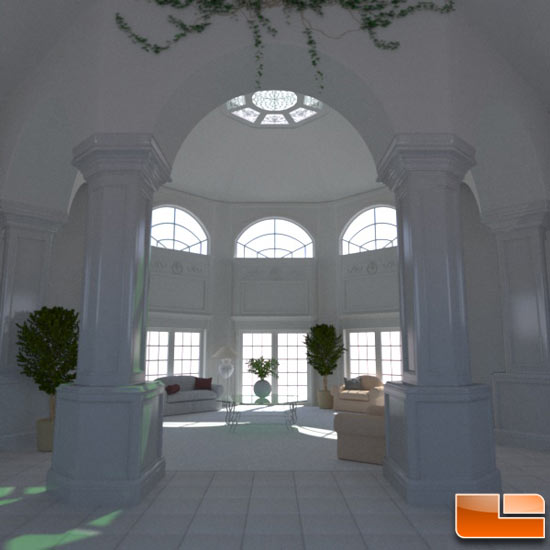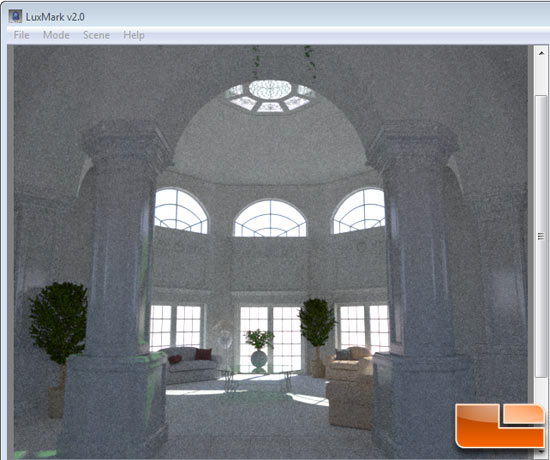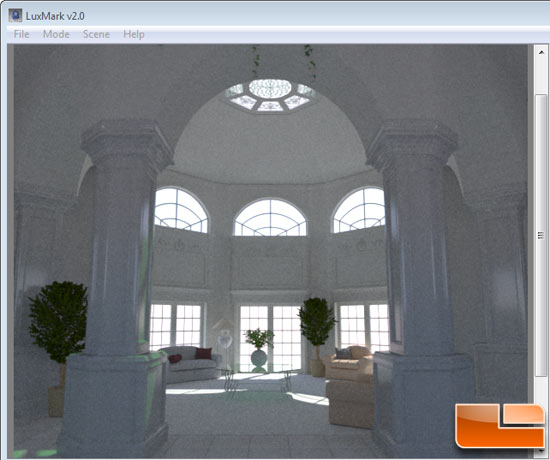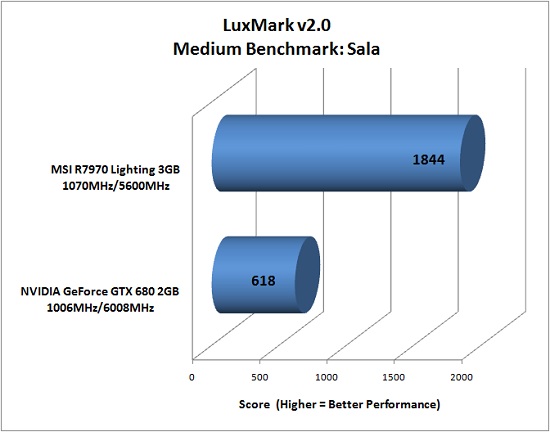NVIDIA GeForce GTX 680 Video Card Review
Folding & LuxMark v2.0
Many of our readers have been asking for GPGPU tests with our video card reviews. We usually run Folding@home (F@H) on our video cards, but right now it’s nearly impossible to do. For the AMD Radeon HD 7970 we could only get F@H to work with Catalyst 12.2 drivers and the latest v7 client with the AMD beta Core_16 executable. After working with AMD and Stanford to get the Radeon HD 7970 up and running we then switched our attention to the NVIDIA GeForce GTX 680 only to find
out that it wasn’t able to run GPU folding at all right now.

Since running GPU folding on the NVIDIA GeForce GTX 680 graphics card is out of the question we threw in the towel and moved on to plan b. OpenCL has certainly taken off in recent years, so we will be looking at LuxMark. LuxMark is a OpenCL benchmark tool and a great test of GPU computing performance. We used LuxMark v2.0 with the Sala benchmark scene. Sala is a 488,000+ triangles benchmark. This scene has been designed by Daniel “ZanQdo” Salazar and adapted for SLG2 by Michael “neo2068” Klemm.

This is what the Sala Benchmark scene looks like when fully rendered. Let’s take a look to see how the NVIDIA GeForce GTX 680 and MSI Radeon HD 7970 Lighting do on this scene.
NVIDIA GeForce GTX 680:

The NVIDIA GeForce GTX 680 scored on average 618 points on LuxMark v2.0 on the Sala benchmark scene. Not too bad, but as you can see it is much more pixelated than the fully rendered image.
MSI R7970 Lighting:

The MSI R7970 Lighting was able to better render this scene as you can tell from the image above and the final score was 1844 points on average.

Here are the benchmark results for those that like to see a chart! The score is actually the results in thousands of samples per second, so as you can see the compute performance of the MSI R7970 Lighting is about three times higher than that of the NVIDIA GeForce GTX 680 in this particular benchmark.

Comments are closed.